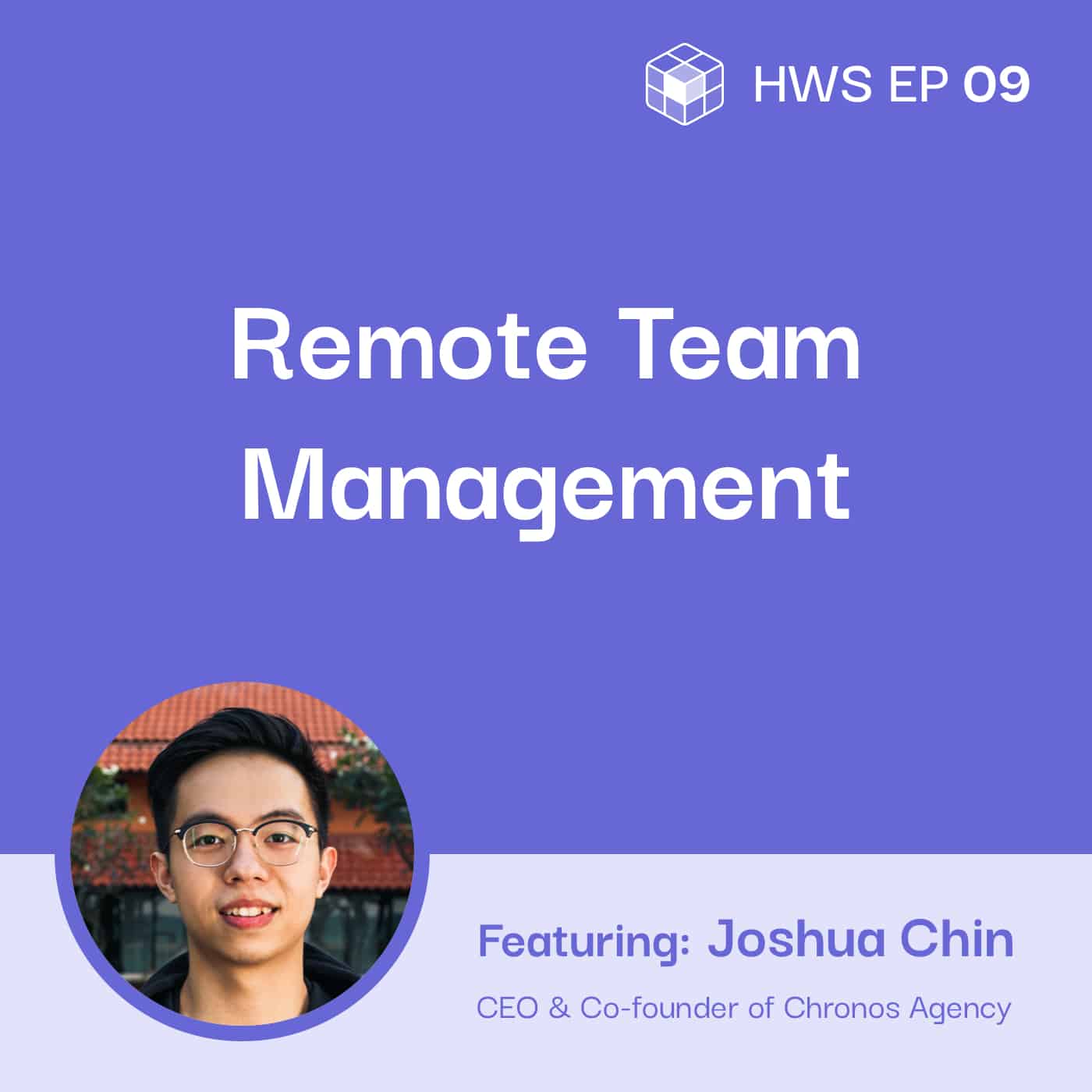Listen on:
Table of Contents:
As your business begins to scale, managing and acquiring remote teams can become increasingly difficult.
Joshua Chin knows — his company, Chronos Agency, grew from side hustle to 60 employees in 2 years, spread across multiple countries.
He came on the How We Solve podcast to discuss what he’s learned about acquiring, growing, & managing a high-performing remote team.
Problem A: Hiring a scaling team within a remote environment
Remote employee management is similar to digital marketing because it’s all about conversions, attraction, & retention.
As Chronos began to scale, Joshua knew he had to move beyond trading his time for money and start to leverage systems and teams.
He wanted to find a way to build the ideal internal engine that allowed the founders/owners to step away and work on the strategy and long term growth. He didn’t want to be stuck to the tactical operations, so he set out to discover the ideal agency or business structure.
Here’s what he discovered:
Talent acquisition in a remote environment is similar to digital marketing.
You’ll hear the same words as you’d hear from any digital marketer when you talk to Joshua Chin about talent acquisition and management: “It’s similar to digital marketing because it’s all about conversions and attraction, and retention.”
Whether an employee is in a remote environment or a physical office, they have the same problems and needs. There are differences — and, to Joshua, one of the biggest differences is positive for remote teams:
Your talent pool expands significantly when you aren’t tied to geography.
Joshua took his talent acquisition search outside of his country, Singapore, and here’s what he found out about acquiring high-performing remote employees:
1: Narrow your search
Narrow down your employee search to the key regions or geographies you want to hire from (perhaps language or time zone barriers limit your search).
Then, find the key job portals within those regions.
2: Tailor your acquisition process to your culture
Understand your company’s strengths — maybe you’re a startup, maybe you allow for more risk, maybe your team is highly structured, etc.
Tailor your talent acquisition to suit who you are looking for, and consider how the process looks to potential candidates. From there, it’s all about sourcing and gaining traffic. (Notice how this is similar to marketing?)
These are the tools Joshua found especially helpful when building his remote team:
- Friending people on social media
- Facebook groups
- Traditional job portals
3: Filter candidates
Joshua’s team uses videos, assessments, and manager-level interviews, all before a candidate even reaches an interview with the business owner. Once a candidate gets to the owner, that interview should be a cultural fit check.
Note on hiring on LinkedIn:
Depending on where your company is from a growth perspective, the owner’s time may be best allocated to finding the right core employees. Early on, Joshua found that to be the case, and about a quarter of his time he allocated to looking for high-quality candidates.
Specifically, Joshua found his personal LinkedIn profile to be a highly effective way to reach prospective employees — reaching out to those who’ve worked with competitors, or who worked in different industries but in similar positions as to what he was looking for.
Problem B: Managing a team in a remote environment
But of course, the acquisition is only 1 piece of the remote employee puzzle.
You also have to manage remote teams.
Joshua has a 3-step process on how to effectively accomplish this.
A business is a machine, with different specialized, moving parts.
1: Manage KPIs when hiring a remote team
Here’s what Joshua has found with managing a remote team.
Managing a remote team is, actually more freeing for entrepreneurs — because it enables them to manage objectives & KPIs.
When you can’t manage employees at your physical location, it’s often freeing for the enterprise because they’re no longer tempted to micromanage, when they come to work, or how they accomplish tasks. Within a remote environment, employers are somewhat constrained to managing KPIs or objectives.
2: Have a system + tools to track KPIs
Since you’re probably managing your remote team based on KPIs, objectives, and goals, you need the tools to support that type of management. Just as with any other team, remote teams require communication and visibility.
At Chronos, they:
- Have weekly meetings, measuring deliverables and output of employees
- Use a tool called ClickUp
3: Physical meetups
Physical meetings are still very important in remote environments.
At Chronos, they have “workcations” twice a year, which include playtime, free time, and work meetings. Plus, they also have quarterly core team offsite meetings.
I gain the most enjoyment and satisfaction when I know I’ve made a person's life just a little happier than it was previously.
– Joshua’s life goal
A book Joshua recommended on acquiring & managing a remote team:
- Rework, from the team at Basecamp
This interview is part of the How We Solve podcast. To hear more from industry experts who are solving everyday business problems, check us out on Spotify, Apple Podcasts, and on our website.
About the guest

Joshua Chin
CEO & Co-founder of Chronos Agency, one of the leading eCommerce email marketing agencies. They increase the ROI of email marketing campaigns by 20 -30% for eCommerce brands.
Listen on:
